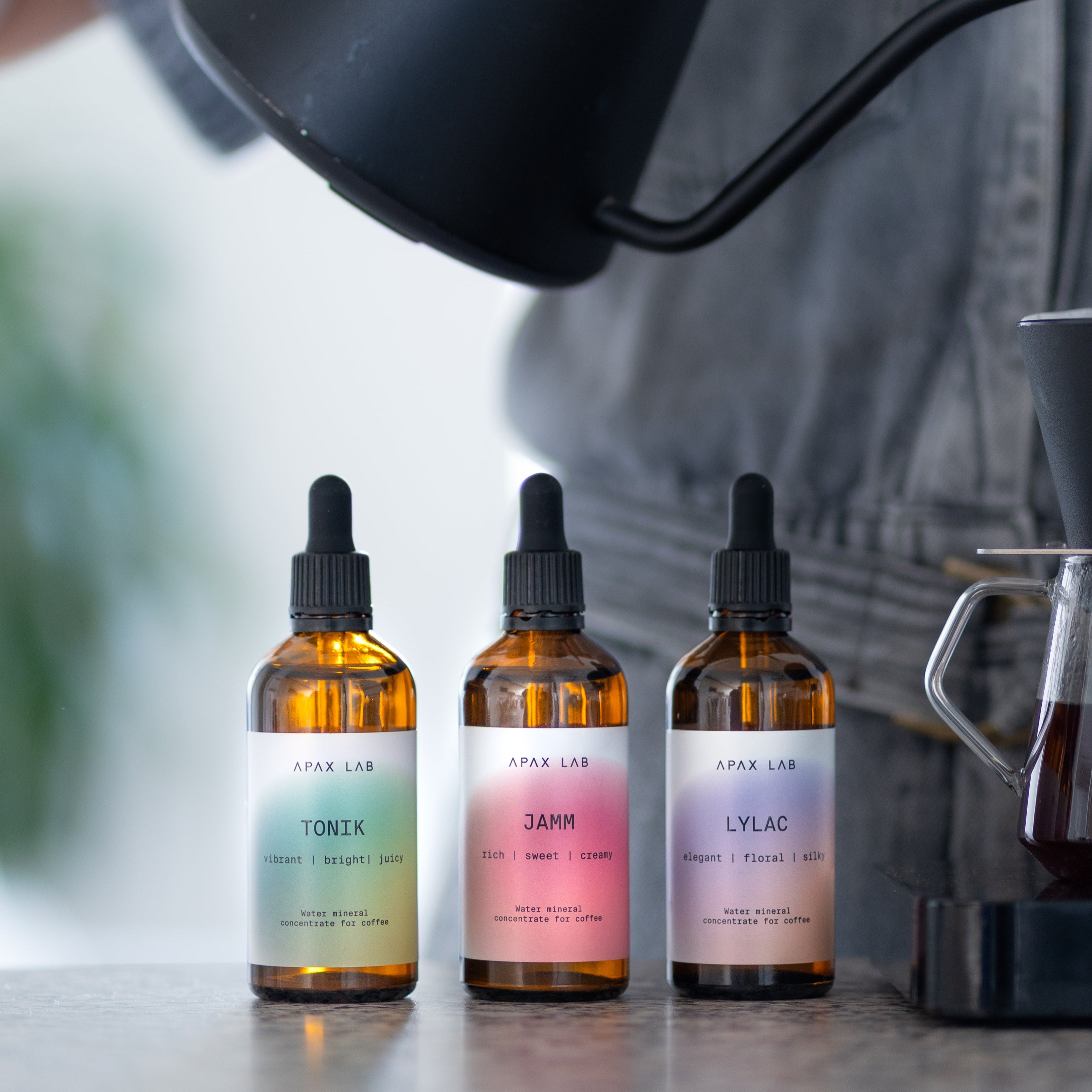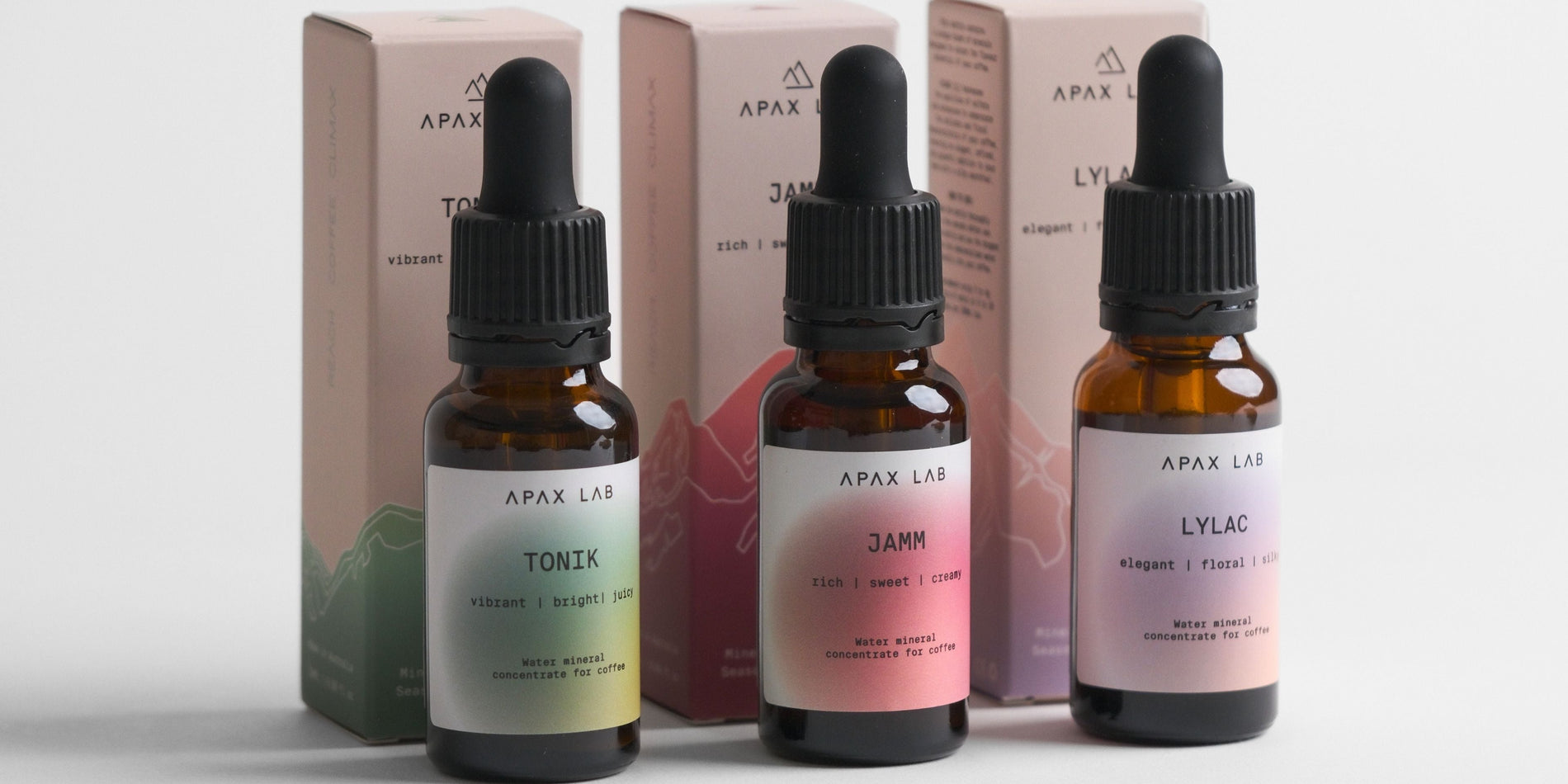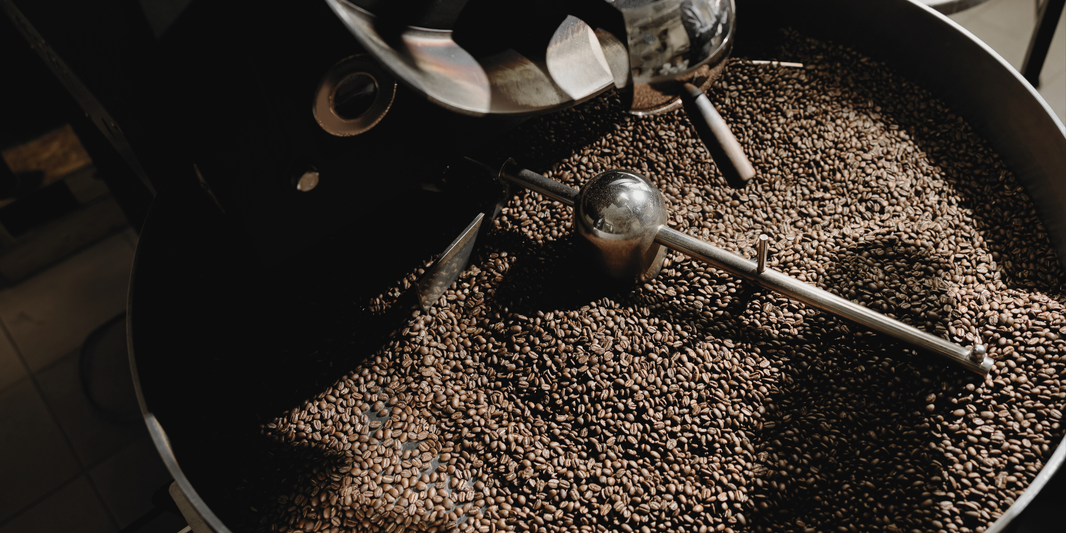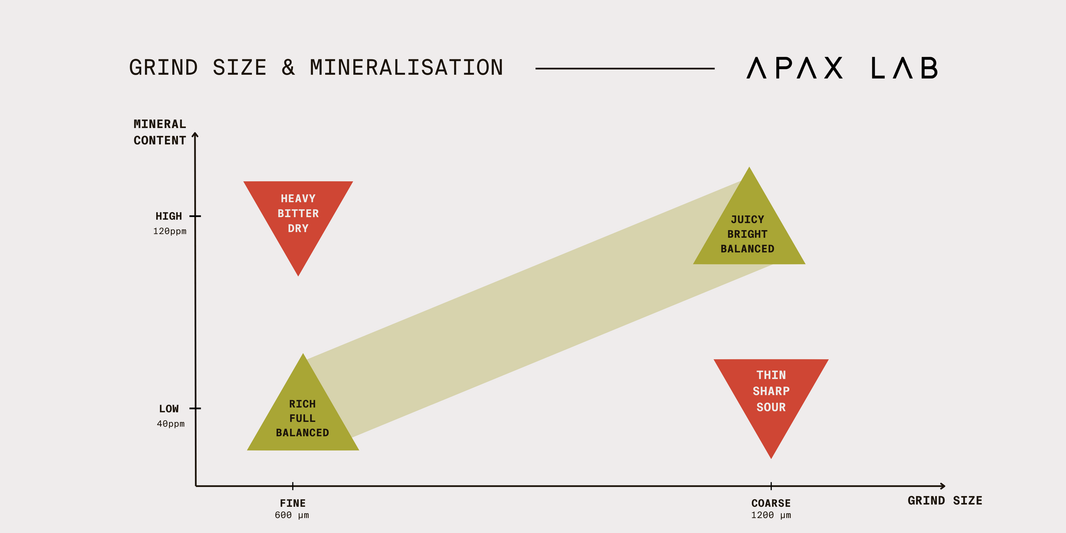At APAX LAB, we believe that coffee can be improved after being brewed.
While roast profiles and extraction techniques play a major role, the mineral composition of your water significantly impacts how coffee presents itself. Acidity, body, aftertaste, and balance are all shaped by the way minerals interact with coffee compounds, influencing the way we experience flavour.
This is where TONIK, JAMM, and LYLAC come in. These mineral concentrates are designed to help users fine-tune how coffee characteristics are perceived, allowing for precise control over key sensory elements without needing to change the roast or brew parameters. Whether you’re aiming to brighten acidity, soften dryness, enhance body, or refine aftertaste, these tools empower you to shape coffee exactly how you want it.
To help you make the most of these concentrates, we’ve created these two profile user guides. One helps you amplify specific characteristics, while the other allows you to soften dominant attributes that may be overpowering the balance of a coffee. Understanding how to use these guides will enable you to create a more controlled and repeatable coffee experience, whether you’re working in a café setting, refining a competition brew, or simply experimenting with different expressions of the same coffee.
How to Enhance Coffee Characteristics

This first profile user guide provides a roadmap for enhancing certain sensory characteristics by increasing the amount of a specific Apax Lab mineral concentrate. Each concentrate is formulated to interact with coffee’s existing chemical composition, bringing out particular qualities while subtly shifting others.
When coffee lacks vibrancy and feels flat, increasing Tonik can enhance acidity and juiciness, making it livelier and more expressive. This works especially well with washed coffees that should have bright, crisp acidity—and can even help revive older, stale coffees by bringing back some vibrancy. Keep in mind that Tonik reduces the perception of body, so while the acidity will shine brighter, the coffee's overall weight will feel lighter.
For those seeking a richer, rounder mouthfeel, Jamm is the best tool for the job. Adding more Jamm increases the perception of body and sweetness, creating a fuller, more structured experience. This is ideal for coffees that feel too thin or lack presence on the palate. At the same time, Jamm subtly mellows acidity, making it useful when working with coffees that may be slightly too sharp or bright for the intended drinking experience.
Finally, Lylac is the go-to when looking to extend aftertaste and floral aromatics. Increasing the amount of Lylac enhances the perception of delicate florals while lengthening the finish of the coffee, making it particularly useful for high-elevation Ethiopian or Gesha coffees that naturally express these qualities. However, as Lylac is also associated with the perception of dryness, using too much can make a coffee feel more astringent than intended.
This guide is particularly useful when a coffee feels dull, unbalanced, or lacking complexity. By strategically increasing the right mineral concentrate, you can refine and shape the coffee’s expression, bringing out its best qualities without needing to modify the brewing process or roast profile.
How to Soften Dominant Characteristics

While enhancing specific attributes is important, sometimes the challenge isn’t that something is missing—it’s that a particular characteristic is too dominant. This is where this second profile user guide comes in, helping to identify which concentrate should be used less to soften certain attributes and bring the coffee back into balance.
Bitterness and floral intensity can sometimes overpower a coffee’s profile, particularly in naturally processed or high-elevation coffees with strong aromatic compounds. In this case, reducing Lylac can help tone down these elements, making the coffee feel cleaner and more refined. Since Lylac also influences aftertaste, using less can lead to a shorter, crisper finish, which may be desirable for coffees that linger too long on the palate.
For coffees that feel overly dry or heavy, scaling back Jamm can help lighten the body and soften the texture. This is particularly useful when working with coffees that naturally have a lot of perceived weight, such as Brazilian or Sumatran coffees, where excessive body can sometimes mask clarity. Reducing Jamm allows the coffee to feel more open and dynamic, without stripping away its core characteristics.
If a coffee’s acidity is too sharp, or the body feels too light, it’s best to use less Tonik. Since Tonik enhances acidity while reducing body, cutting back its use will allow the coffee to maintain more structure and feel less intense on the palate. This can be particularly useful when working with highly acidic coffees, such as Kenyan or washed Ethiopian lots, where excessive acidity may need to be dialed back for a smoother, more balanced experience.
Rather than viewing this as a way to remove characteristics, it’s more about refining their intensity. Coffee should feel harmonious, with each element contributing to a balanced sensory experience. By carefully adjusting the levels of each Apax Lab concentrate, you can ensure that no single characteristic overwhelms the cup, leading to a more refined and intentional coffee experience.
How to Apply These Adjustments in Your Coffee Workflow
Incorporating these techniques into your daily workflow is simple and can be done at any stage of the brewing process. The first step is to evaluate the coffee as it is, identifying whether it needs more brightness, more body, or a longer finish—or whether certain elements feel too overpowering. Once you’ve pinpointed what needs adjustment, you can reference the Profile User Guide to determine whether you should increase or decrease a particular mineral concentrate to achieve your desired outcome.
It’s always best to make adjustments gradually. Small changes can have a noticeable impact, so rather than making large modifications all at once, try incrementally increasing or decreasing a concentrate and tasting as you go. This approach allows for precise control and ensures that the final result is balanced and refined.
For baristas, roasters, and competition professionals, this method provides a powerful way to dial in coffee with consistency and confidence. By integrating these tools into your workflow, you can shape the perception of coffee characteristics with a level of control that goes beyond traditional brew adjustments.
Taking Control of Coffee Perception
At the heart of APAX LAB’s approach is the idea that coffee is not just about flavour—it’s about perception. Water plays a crucial role in shaping how we experience acidity, body, aftertaste, and balance, and by understanding how to manipulate its mineral content, we can refine coffee in ways that were previously difficult to control.
Tonik, Jamm, and Lylac exist to give coffee professionals the ability to craft coffee with precision, bringing out the best in every cup without needing to change brewing parameters or roast profiles. Whether you want to elevate a coffee’s natural vibrancy, enhance its texture, or create a more seamless finish, these tools allow you to make targeted, repeatable adjustments that enhance the overall drinking experience.
By mastering the APAX LAB profile user guides, you gain a deeper understanding of how to fine-tune coffee’s sensory characteristics, unlocking a new level of control over your brews. Experiment, refine, and push the boundaries of what’s possible in coffee. The perfect cup isn’t just about extraction—it’s about perception. And now, you have the tools to shape it exactly how you want.






